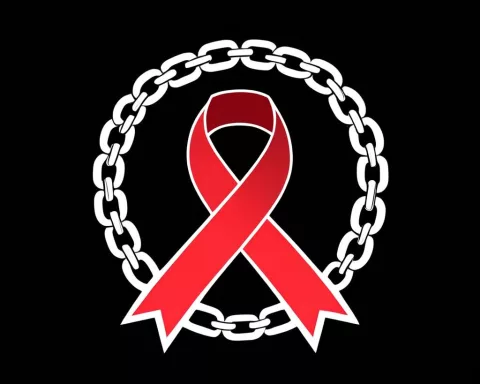In South Africa, many children run away from home due to deep pain, neglect, and fear. They may flee from violence, substance abuse, or simply feeling unloved. This troubling trend leaves families heartbroken and searching for answers. To help these children, it’s vital for parents and communities to create safe spaces where kids feel heard and supported. By understanding their struggles and offering care, we can guide them back to safety and hope.
What are the main reasons children run away in South Africa?
Children in South Africa run away due to various complex reasons, including trauma, neglect, abuse, and emotional disconnection. Factors like gender-based violence, substance abuse, and peer pressure also play significant roles. Addressing these issues requires understanding, support, and proactive engagement from families and communities.
In South Africa, the unsettling phenomenon of children abruptly leaving their homes is a growing concern, causing emotional distress and legal challenges for families. The George Herald has brought attention to this issue, highlighting how sudden disappearances leave parents in a state of turmoil. Experts, however, believe that understanding the deeper reasons behind such behavior can help parents address and manage the situation more effectively.
Legal Framework and Parental Responsibilities
South African law, through the Children’s Act, categorizes individuals under 18 as minors and mandates parents and guardians to ensure their children’s safety. When a child goes missing, it is imperative to report the incident to the police immediately. Advocate Marilyn Scheepers Olifant, leading Legally You, stresses the importance of taking each runaway incident seriously. She asserts, “Police have a duty to respond and investigate, even if the child has returned before.”
Frequent disappearances may indicate underlying issues such as trauma, abuse, neglect, or emotional disconnection, necessitating thorough investigation. The Department of Social Development (DSD) offers crucial services, including counseling, family support, and foster care placement for affected children. South Africa’s Children’s Courts play a significant role in these cases, with the authority to issue protection orders, appoint child advocates, or even remove a child from a harmful environment to ensure their safety.
Psychological and Social Dimensions
The reasons behind children running away are complex and deeply personal. Factors such as gender-based violence, substance abuse within the household, peer pressure, and untreated mental health issues often drive children to flee. In some cases, subtler triggers like feeling unheard, unloved, or emotionally neglected push children towards this drastic step. Addressing these root causes requires prioritizing healing over punishment.
While affluent families might afford private interventions, financially disadvantaged parents can access public legal aid, free counseling services, and NGOs specializing in child and family welfare. Vezasie, an advocate for child welfare, emphasizes the importance of fostering a safe and communicative home environment. “Preventing a child from running away starts long before they ever think of doing it,” she advises. “Spend time with them, talk to them, validate their feelings. Help them develop tools to cope with stress.”
The Role of Family Dynamics
Family dynamics significantly influence whether children feel secure or driven to run away. Exposing children to violence or emotional instability, even in seemingly minor ways like arguing in their presence, can create an atmosphere of insecurity. Vezasie explains, “Arguing in front of your kids may seem minor, but it can make them feel unsafe.” Effective communication and emotional validation within the home are crucial for fostering a sense of security and belonging.
Addressing runaway behavior necessitates a proactive approach. Open communication, access to support systems, and nurturing environments are essential. Parents must engage with their children, providing the emotional and psychological support needed to navigate their formative years.
Societal and Cultural Influences
The issue of children running away cannot be isolated from the broader societal and cultural context. South Africa’s diverse socio-economic landscape presents unique challenges and stressors. Economic hardship, social inequalities, and cultural stigmas often exacerbate the problems faced by families. Historical and artistic movements within the country have long grappled with themes of displacement and identity, reflecting the complex interplay between individual experiences and societal dynamics.
Art has played a significant role in expressing the struggles and resilience of South African youth. From powerful works from the apartheid era to contemporary pieces addressing modern-day challenges, art offers a lens to comprehend the emotional and psychological landscapes of children. It serves as both an outlet for expression and a means to foster empathy and connection within communities.
Community and Institutional Support
Addressing the issue of runaway children requires robust community involvement and institutional support. Schools, community organizations, and religious institutions can provide essential support networks for at-risk youth. Programs offering mentorship, counseling, and recreational activities help children build self-esteem and develop coping mechanisms.
Public awareness campaigns and educational initiatives can also destigmatize the issue, encouraging families to seek help without fear of judgment. By fostering a culture of openness and support, communities can collectively address the root causes and offer a safety net for vulnerable children.
Personal Anecdotes and Observations
Personal stories add a human dimension to this complex issue. Take, for instance, Thandi, a 15-year-old girl from Johannesburg who ran away multiple times before finding stability through a community support program. Thandi’s journey underscores the importance of early intervention and the significant impact a nurturing environment can have on a child’s life.
Social workers and psychologists working with runaway children provide invaluable insights into the challenges and triumphs of these young individuals. Their experiences highlight the resilience and strength of children who, despite facing significant adversity, continue to strive for a better future.
The issue of children running away in South Africa is multifaceted, demanding a comprehensive and compassionate approach. By understanding the legal, psychological, and social dimensions, and fostering open communication and supportive environments, families and communities can collectively create safe, nurturing spaces for all children. Addressing this issue proactively can help mitigate the factors driving children to run away and support their journey towards stability and well-being.
FAQ: The Complexities Behind Children Running Away in South Africa
What are the main reasons children run away in South Africa?
Children in South Africa run away due to complex issues such as trauma, neglect, and emotional disconnection. Contributing factors include gender-based violence, substance abuse within families, peer pressure, and feeling unloved. Addressing these concerns requires understanding and proactive engagement from both families and communities.
What legal responsibilities do parents have regarding their children?
Under South African law, specifically the Children’s Act, parents and guardians are mandated to ensure their children’s safety. If a child goes missing, it is crucial to report the incident to the police immediately. Law enforcement is required to take each incident seriously and investigate it thoroughly, even if the child returns home.
How can families create a supportive environment for children?
Creating a supportive environment involves open communication, emotional validation, and fostering a sense of security at home. Parents should spend quality time with their children, listen to their concerns, and help them develop coping mechanisms for stress. This proactive approach can mitigate feelings of neglect and emotional disconnection.
What role do community and institutional support play in preventing children from running away?
Community and institutional support is vital in providing resources, mentorship, and safe spaces for at-risk youth. Schools, community organizations, and religious institutions can offer counseling, recreational activities, and programs that help build self-esteem. Public awareness campaigns can also destigmatize the issue, encouraging families to seek help without fear of judgment.
How do societal and cultural factors influence children running away?
Societal and cultural factors such as economic hardship, social inequalities, and cultural stigmas significantly impact families. These elements can exacerbate the challenges children face at home. Understanding these broader contexts is essential for addressing the root causes of runaway behavior and supporting affected families.
Can personal stories help in understanding the issue of children running away?
Yes, personal anecdotes provide valuable insights into the experiences of runaway children and highlight the importance of early intervention. Stories, like that of Thandi, a 15-year-old who found stability through community support, demonstrate how nurturing environments can transform lives. These narratives foster empathy and can inspire communities to take action in support of vulnerable youth.












